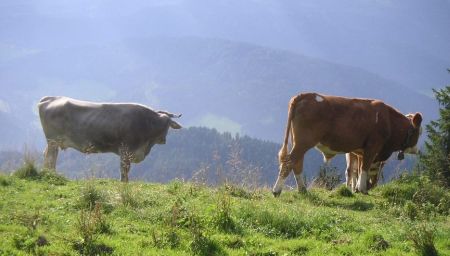Certain fatty acids (omega-3, PUFA, CLA) have been proven to have positive health effects. The body cannot produce these fatty acids itself, so they must be consumed through food.
It has been proven by numerous studies that the fatty acid pattern of milk can be influenced by what the cows are fed (basic feed, concentrated feed, feed additives). The fact is that there are significantly higher levels of nutritionally valuable fatty acids in meat and milk that come from grass and its canned food-based production systems than in intensive systems based on corn silage and/or high amounts of concentrated feed.
In Austria, hardly any published studies have been carried out on the fatty acid pattern of milk. The results of this project can support Austrian dairies in promoting the fatty acid pattern of Austrian milk, especially on the international market. The project also provides valuable information for nutrition-conscious consumers and helps ensure that the value of extensive, low-input dairy products is conveyed from the farmer to the consumer.
As part of the project, fresh milk from around 10 Austrian alpine pastures, from a full-pasture farm (organic farm Moarhof of the LFZ Raumberg-Gumpenstein) and from an intensive dairy farm (conventional farm of the LFZ Raumberg-Gumpenstein) will be examined. Shelf milk from Austrian supermarkets is also being examined. The focus of the study should be on unsaturated fatty acids (omega-3, omega-6, CLA, monounsaturated and polyunsaturated).
Project goals:
- Representation of the fatty acid pattern with a focus on unsaturated fatty acids from Austrian cow's milk that is produced on the Alpine pasture
- Illustration of the milk fatty acid pattern of a full-grain pasture farm in a mountain area
- Comparison of the fatty acid pattern of grass-fed milk with milk from intensive production
- Comparison of the fatty acid pattern of Austrian shelf milk from different dairies/brands
- Demonstrating the change in the milk fatty acid pattern of Austrian alpine, pasture and shelf milk over the course of the year
- Clarification of the extent to which Austrian milk from different production systems contributes to meeting the need for fatty acids essential to humans
Further information on project management can be found in the database for research and sustainable development (Dafne) -> Link







